+ Crate
Choosing the right crate for your puppy is important. The crate is one of your most valuable tools as a puppy parent. When used appropriately it will become your puppy’s preferred location for comfort, security, and solitude. Dogs are den animals, and the crate simulates a den environment while also keeping your dog safe and secure.
A proper crate is integral to housetraining, managing freedoms, and safe transport. Crates come in three primary materials: plastic (aka flight kennels), fabric (aka soft sided kennels), and collapsible metal pens with a base tray. Lu’s Labs recommends metal crates as they are durable (resistant to chewing), easily cleaned, and can be secured. If you are purchasing a used crate, ensure it is thoroughly cleaned and disinfected before allowing your puppy inside.
Choose a crate that will accommodate your puppy when he or she is fully grown. Your dog’s crate should be large enough for them to stand up and comfortably turn around in. While your puppy is small, block off excess crate space using a divider (many metal crates come with these) to prevent puppy from eliminating inside the crate. When the crate is appropriately sized, your puppy is less likely to eliminate inside of it, as dogs do not typically like to soil their dens.
If you have a large or multi-level home, you may consider investing in more than one crate. For example, you may keep one upstairs in your bedroom so the puppy can be near you as it sleeps at night, and you may keep one in your living space so you can monitor puppy in the crate when you are doing house chores, cooking, etc.
Important Reminders:
- Never use the crate as punishment
- Do not leave your puppy in the crate for more than 3-4 hours at a time
- Crate your puppy only until you can trust them in your home. After that, the crate should be a place your puppy chooses to spend time voluntarily
- Do not leave anything in the crate with your puppy unsupervised - including sleeping mats, beds, toys, etc. until you know you can trust your puppy not to destroy or ingest foreign objects
- Each dog in your home should have its own crate (den)
- Do not allow children (or adults) inside the crate with any dog at any time
- Take your puppy’s collar off when inside the crate to prevent choking / strangulation
+ Collar & Lead
Lu’s Labs recommends martingale collars for your puppy. A martingale collar looks similar to a standard nylon collar at first glance, but is actually comprised of two interconnected collars (one around the dog’s neck, and another which is attached to the lead). When your puppy pulls on the lead, the collar loop around the neck tightens. Martingale collars have several benefits:
Puppy cannot slip out of a martingale collar when it is fitted appropriately
Martingale collars prevent neck injury by fitting loosely around your puppy’s neck and tightening only when necessary; distributing pressure evenly to prevent injury to your puppy’s neck / trachea
The gentle tightening mechanism of a martingale collar makes it conducive to training loose lead walking. Your puppy will be safely controlled while being consistently reminded by the tightening action not to pull on the lead.
Leads should be durable, able to support at least three times your puppy's weight, and no more than 6-8 feet in length. You may choose to use a shorter or thinner leash while your puppy is growing to avoid unneccesary weight on puppy's neck. Always keep extra leads on hand, and keep leads out of reach when not in use to avoid chewing.
Use of retractable leads is not allowed. There are many reasons to avoid use of a retractable leash, starting with the fact that on this type of leash, your dog can get far enough away from you to either get into trouble or into harm’s way. Retractable leashes are also responsible for many injuries to both dogs and dog walkers – from superficial burns and cuts to horrific amputations. In most cases, these devices are also wholly counterproductive to training a dog to walk politely on lead. The very nature of retractables trains dogs to pull on the leash to extend the lead. Needless to say, this pulling behavior will be repeated whenever the dog is on a standard leash. Learn more about the dangers of retractable leads
While your Lu’s Labs puppy is microchipped, it is imperative that your puppy wears identification tags at all times for their safety. In many areas, it is the law. Your puppy’s tags should include your puppy’s name, a phone number where you can always be reached and medication requirements if applicable. You may also wish to include your city and state. Additionally, it is a smart idea to indicate on your puppy’s tags that he or she is microchipped - you may even wish to include the chip number itself to expedite the recovery process in the event your puppy is lost.
Important Reminders:
- Check your puppy’s collar at least every week until he or she is fully grown to ensure correct fit. Your puppy is growing; the collar is not!
- You should be able to fit two fingers between the collar and your puppy’s neck, although it should not be loose enough to slip off over the head
- Remove your puppy’s collar when they are in their crate, or when they are at risk of becoming tangled with another dog or object during play
- Prong Collars, Shock Collars, and E-Collars, are PROHIBITED - including their use as a training tool
+ Harness
Harnesses are simply the safest, most secure, and most comfortable way to hook your puppy up to a lead. A good harness will reduce pulling, increase your control over your pup, and decrease stress on their neck and joints. Because it secures closer to the dog’s center of gravity, a harness gets tangled in the leash less and helps prevent jumping.
Harnesses come in many different styles, incuding front clip, back clip, and dual clip. No matter what style you choose for your puppy, be sure to follow fit guidelines to prevent injury or escape. For additional security, you may clip the harness and collar together with a carabiner that is strong and "locks" in place; be sure to attach the carabiner to the leashes to the harness and collar, not the carabiner.
+ Water & Food Dishes
Food and water bowls for your puppy may seem like a simple thing, but materials matter! The easiest type of bowl to keep clean – and, not incidently, also the safest bowl for your dog to eat and drink from – is stainless steel. This material will not leach potentially dangerous chemicals into your dog’s food and water, like some plastics, aluminum, poorly glazed pottery, or old ceramic dishes.
Elevated food bowls are not necessary for your puppy and can be an obstacle to feeding. Unless your veterinarian specifically recommends it, your puppy will be just fine with bowls that rest on the floor. If you have a fast eater, consider a slow feeder bowl.
Ensure your puppy has a dedicated eating space that is easily accessible and clean. Your feeding routine, including your bowls, are some of your biggest training tools.
+ Age Appropriate Toys
Age appropriate toys are some of your best assets when raising a puppy - in terms of training, entertainment, and development! Choose toys that exercise your puppy's mind, help them develop control over their growing body, and occupy those teeth! Video: Types of Toys & How to Use Them
Brain Games
> Food Dispensing Toys
> Snuffle Mats
> Puzzles
Chewing
> Bully sticks> (they also go by other brand names) - these are dried bull pizzles. There is no choking hazard, they are digestible, and they come in all the same sizes and shapes you might expect from a rawhide. Although we use these, there are some downsides: they have the same bacteria issues as rawhide, they are very high in calories, and they are messy and stink to high heaven! Antlers - These are from elk or deer. They won’t splinter or create much odor, and they have nooks and crannies that really help get your dog’s teeth clean. Be sure to get the naturally-shed ones for extra kindness!
> Kongs> - These are the ubiquitousrubber oblong toys that you can stuff with treats and various spreads to keep your dog occupied and chewing for hours! They are billed as being indestructible, so there are no concerns about choking or digestion (except for whatever you put in it). There are plenty of other rubbery type of chewies on the market as well. Check out Dogzilla and Zanies as well.
> Yak/Himalayan chews> - Made from yak’s milk using a Nepali method. They are hard and thick, but yielding. They are all-natural, so there is no concern with bacteria, choking, digestion, or smell. These are one of the best chewing options available on the market today.
> Frozen peanut butter, broth cubes-> You can always go DIY and make your own frozen concoctions that your dog can work on for hours. These are especially great during the summer months!
> Dental chews and treats> - there are a plethora of brands on the market, and there are mixed reviews of different ones, depending on who you talk to. One that seems to be safest is Halo brand chews (they come in different flavors), but you should definitely ask your vet and local, independent pet food store for their feedback.
Toys to Avoid and/or Supervise Closely
> Vinyl> - > Dangers of Vinyl Toys
> Sticks> - > Common Injuries and Pitfalls
> Rope Toys> - Strands of rope can be very dangerous when swallowed. Vets categorize this as a “linear foreign body.” The danger occurs when one part of the rope is stuck in the stomach and the other part of the rope makes it into the intestines. The digestive system attempts to pass this through its system, and it begins to cinch on itself like the drawstring in a pair of sweatpants. This slowly tightens the digestive track and can become life threatening and painful. Even small pieces of rope overtime can accumulate like hairs in a shower drain causing a blockage.
> Nylabones> - When unsupervised some dogs can chew these into small pieces that are not digestible. They can cause intestinal blockage, and when chewed into sharp shards can also pose a threat by puncturing the intestines.
> Rawhides> - Some rawhide bones have been found to have trace contaminants and toxic chemicals not good for your dog’s consumption. Choking and blockages can occur when your chewer ingests pieces of the rawhide bones. Your dog may be sensitive to rawhide and it can cause vomiting, diarrhea, and other signs of poor health.
> Balls and Tennis Balls> - Balls are a major choking hazard for dogs. Especially if the ball is wrong sized. Typical tennis balls can be too small for larger breeds like golden retrievers and, you guessed it, Labs. The ball can get stuck in your dog’s throat when he or she catches it and cause a blockage. When this type of accident happens, you will not have time to get the dog to the vet before he could choke. It’s important to get to your dog immediately, straddle the dog, open the mouth and grab it out of the throat, it may mean sliding 2 fingers down to try to get it un-wedged. If it’s lodged too deeply you may need to work on the outside of the dog’s throat first and try to roll the ball up. The faster you can get the ball out the better your dog’s chances of survival. At the end of the day it’s important to consider oversized balls that won’t go down their throats when engaging in play.
The bottom line is, that when our dogs are left to their own devices it’s important we don’t leave them with toys that can be harmful. It’s also important to supervise their play and know the right toys for the right sized dogs.
+ Grooming Supplies
Nail Clippers
Nail clipping is not for the faint of heart. If you are uncomfortable or inexperienced with cutting a puppy's nails, always consult your veterinarian. In fact, many dog owners leave this task to the professionals.
However, if you choose to clip nails at home, three primary options are available. Ensure that no matter which kind of clipper you choose, you understand how to use the tool safely and effectively - and have a plan in place in the case of an emergency. Nail clipping can be traumatic and injurious if done incorrectly - especially to puppies that are in critical stages of development.
Brushes
Brushing is an important part of maintaining a healthy coat, and is also an opportunity for you to regularly evaluate the health of your puppy's skin. Brushes come in many varieties for different uses. Ensure that your selection is appropriate for your puppy's length and density of hair - and does not cause any painful pulling or raking on the skin. While shedding may be driving you crazy as your puppy phases in their adult coat, it is important to be gentle and allow undercoats to cycle naturally.
Shampoos
A safe and effective "regular use" shampoo is an essential staple for your puppy - who will no doubt be exploring, rolling, and playing outside. Just like human shampoos, puppy shampoos can be formulated for general cleaning as well as specific purposes like killing fleas or soothing irritated skin.
Unfortunately the wide variety of products available can include harmful ingredients that you should avoid. Pet shampoos are not regulated - meaning manufacturers are not required to list their ingredients on the bottle. Select a shampoo that clearly lists all ingredients and make sure you understand what they are used for. Artificial colors and fragrances may make the bathing experience more pleasurable for you - the human - but offer no benefit to your puppy. In fact, many pthalates and synthetics have properties that can be toxic to your puppy. Never use human shampoo on your dog.
Avoid bathing your puppy too often. A good rule of thumb is about once a month (and of course - not while recovering from spay/neuter). Your puppy's skin is sensitive and is home to an entire microworld of friendly bacteria. Washing too often may reduce your puppy's ability to fight off skin infections or cause irritation. In between baths, consider using a dry shampoo for odor - or baby wipes / wet washcloth for "spot" cleaning.
Toothpaste & Brushes
Yes, your puppy needs to brush! A puppy that grows up with brushing as part of their routine will be less resistant to it as an adult - and with toothpaste flavored like chicken or beef, many even enjoy it! Over two thirds of dogs over the age of three have periodontal disease (inflammation or infection of tissue surrounding the teeth) which starts as gingivitis caused by plaque. You can help your puppy have better dental health for their lifetime (and better breath) by brushing regularly.
Commercial toothbrushes are available specifically designed for use in dogs. Pet toothpase is available in a variety of flavors. Never use baking soda or human toothpaste.
+ Transport
Your puppy is always safest when riding in a crate. There are some models specifically designed for use in the car. However, crate travel is not always feasible or practical for regular trips.
Just like humans, puppies should always be buckled up on the road. Using a crash test certified seatbelt or harness mechanism for your puppy helps prevent driver distractions, attempts to escape, barking and lunging, restlessness, etc. as well as serious injury. Just like a child, the safest place for your puppy to ride is in the back seat.
Learn more about the Center for Pet Safety's CPS Certification Program for harnesses, crates, and carriers.
Always tether your puppy when riding in the car to prevent escape.


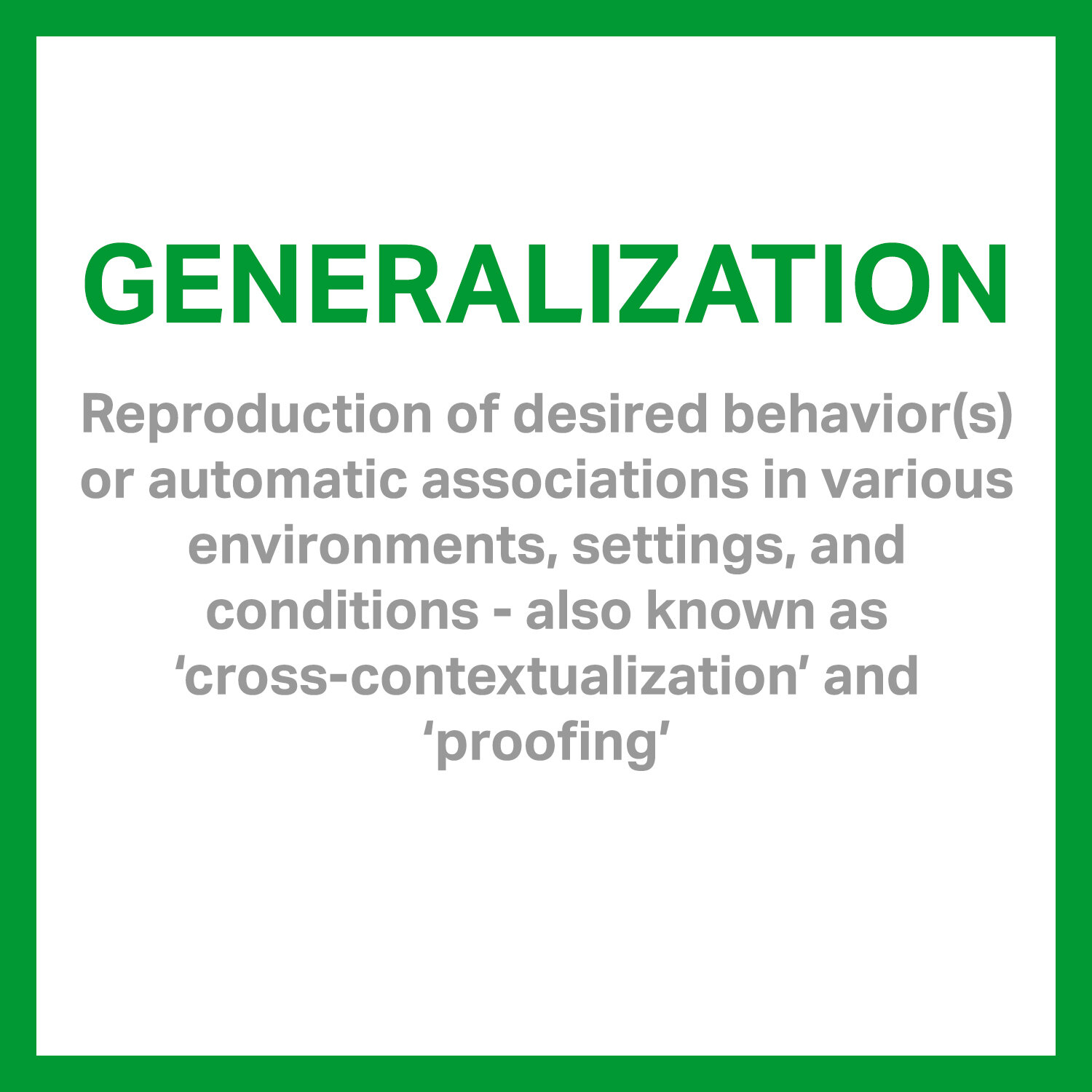
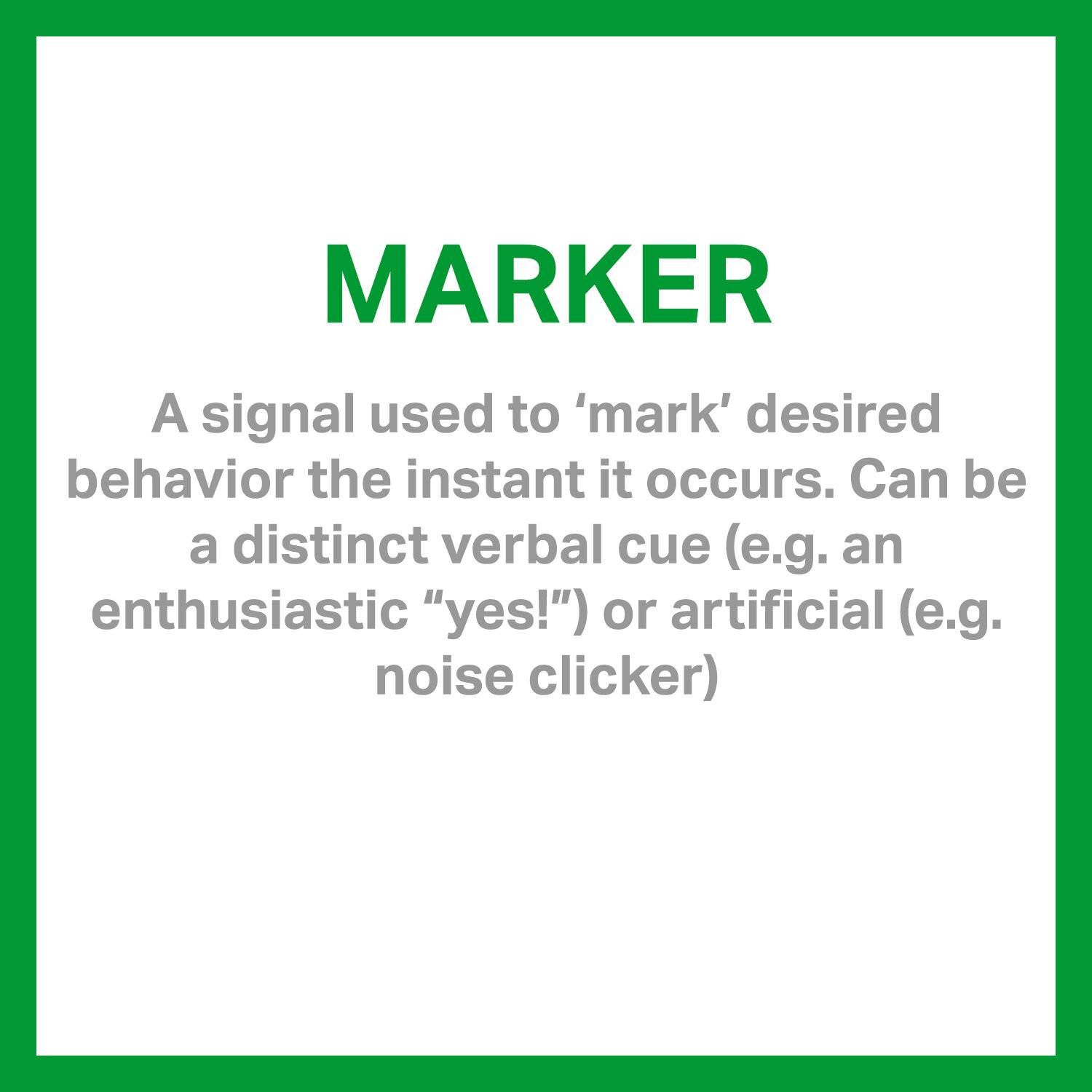
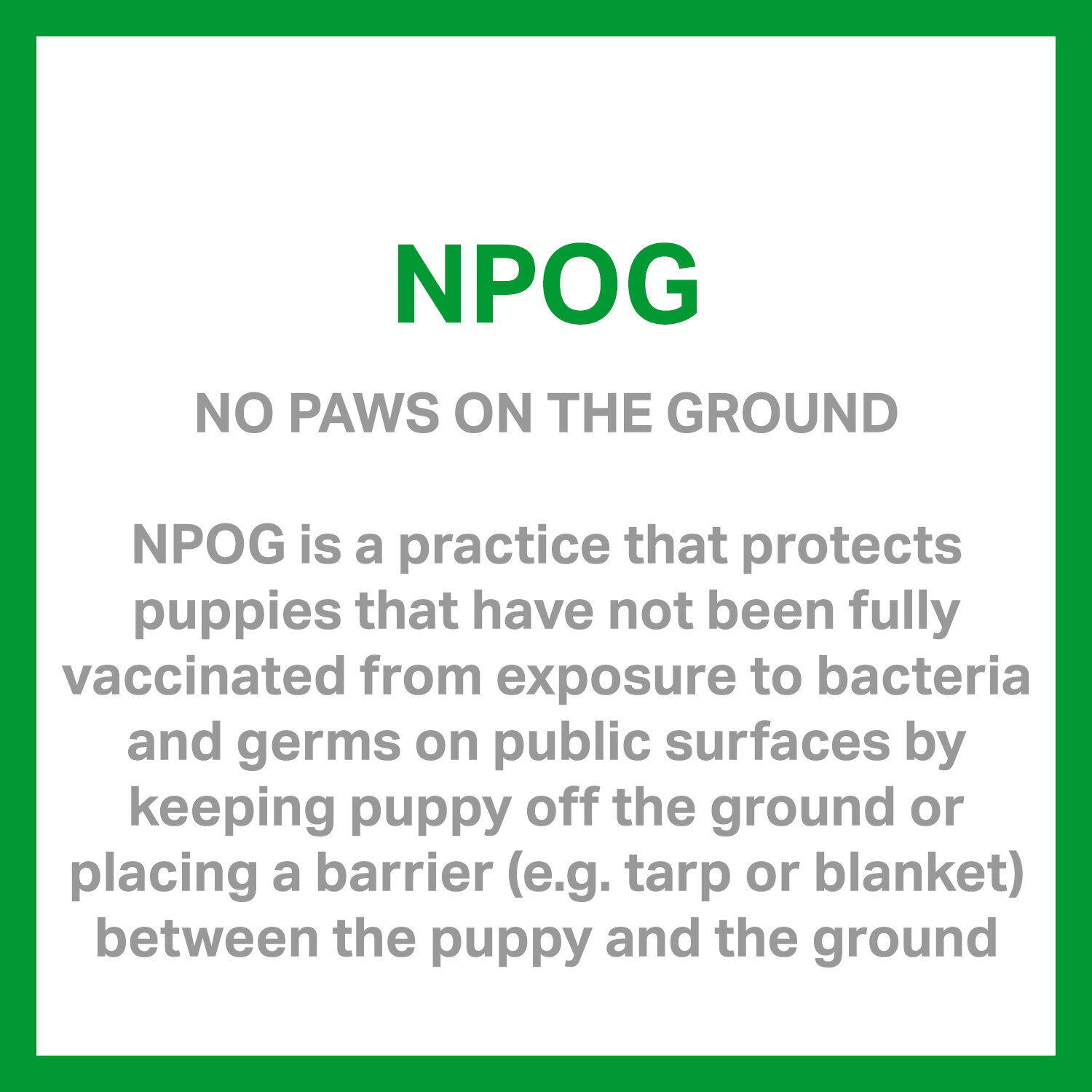
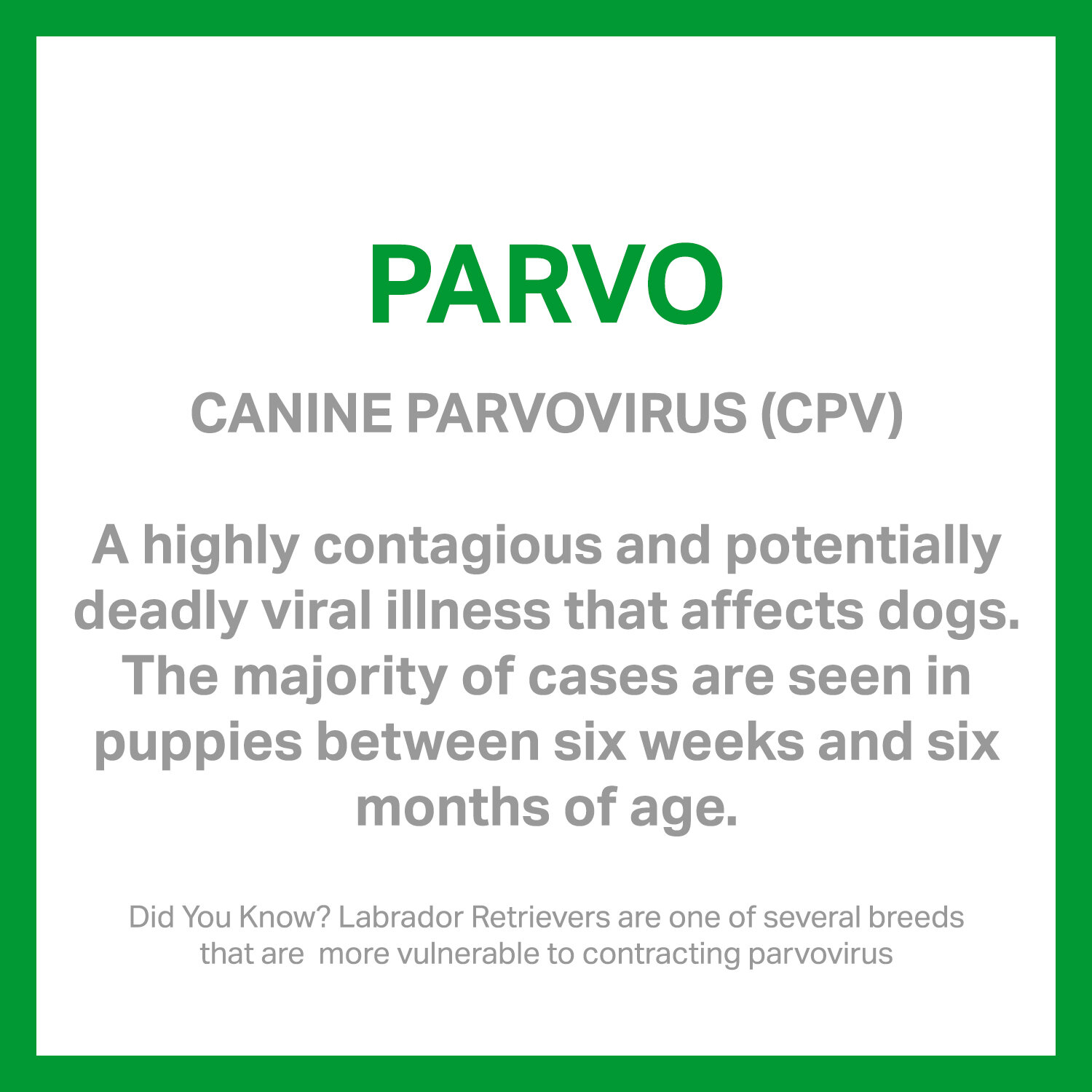
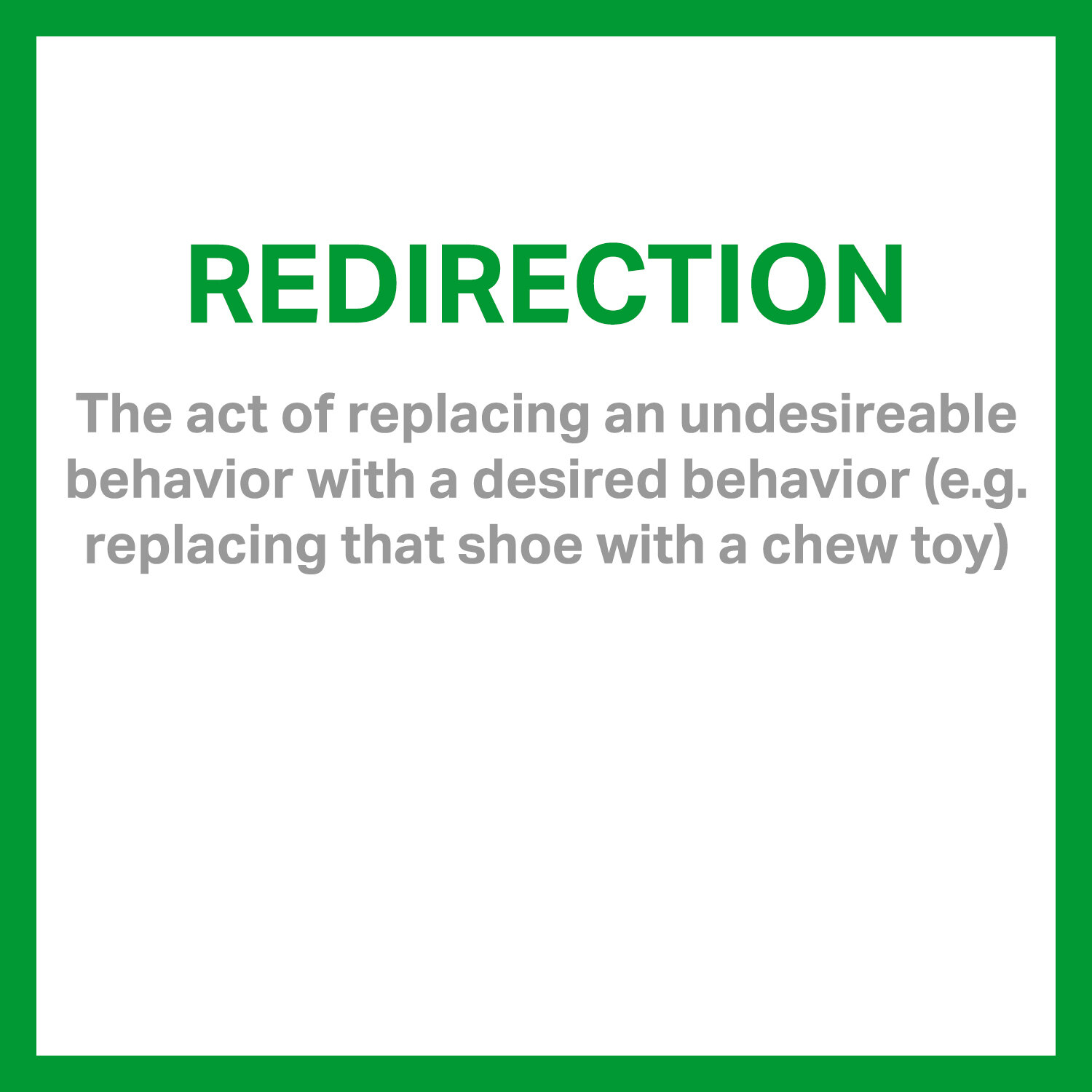
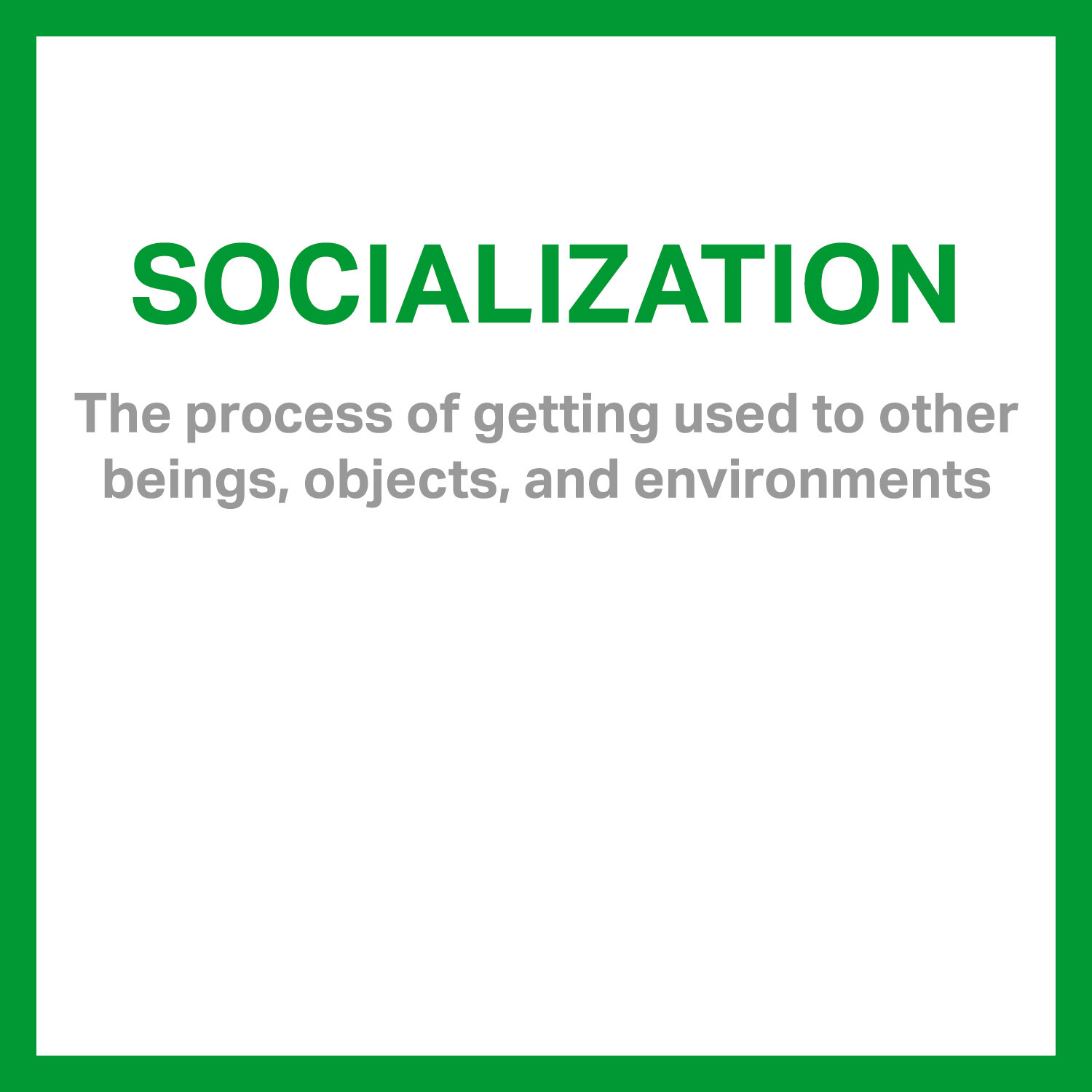
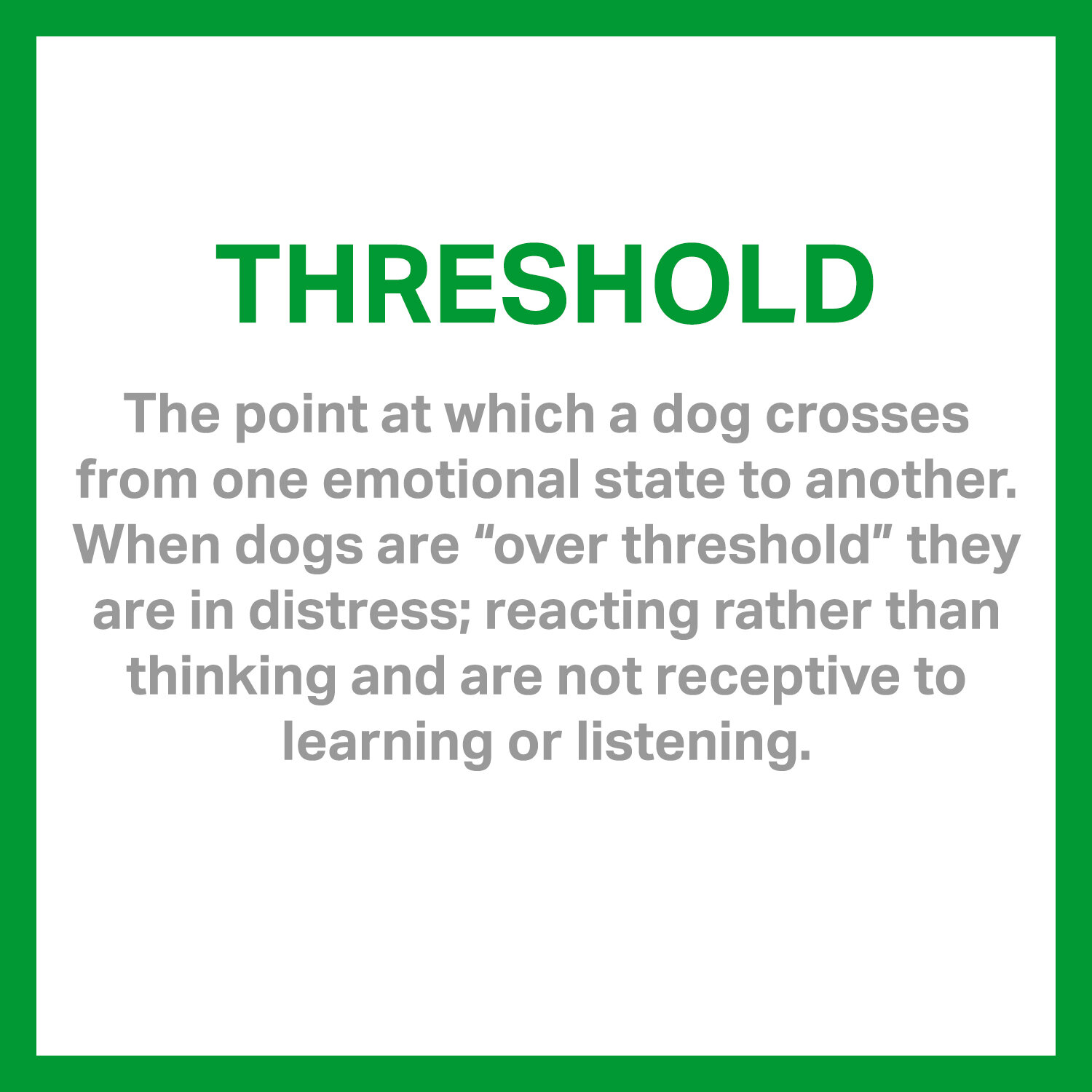
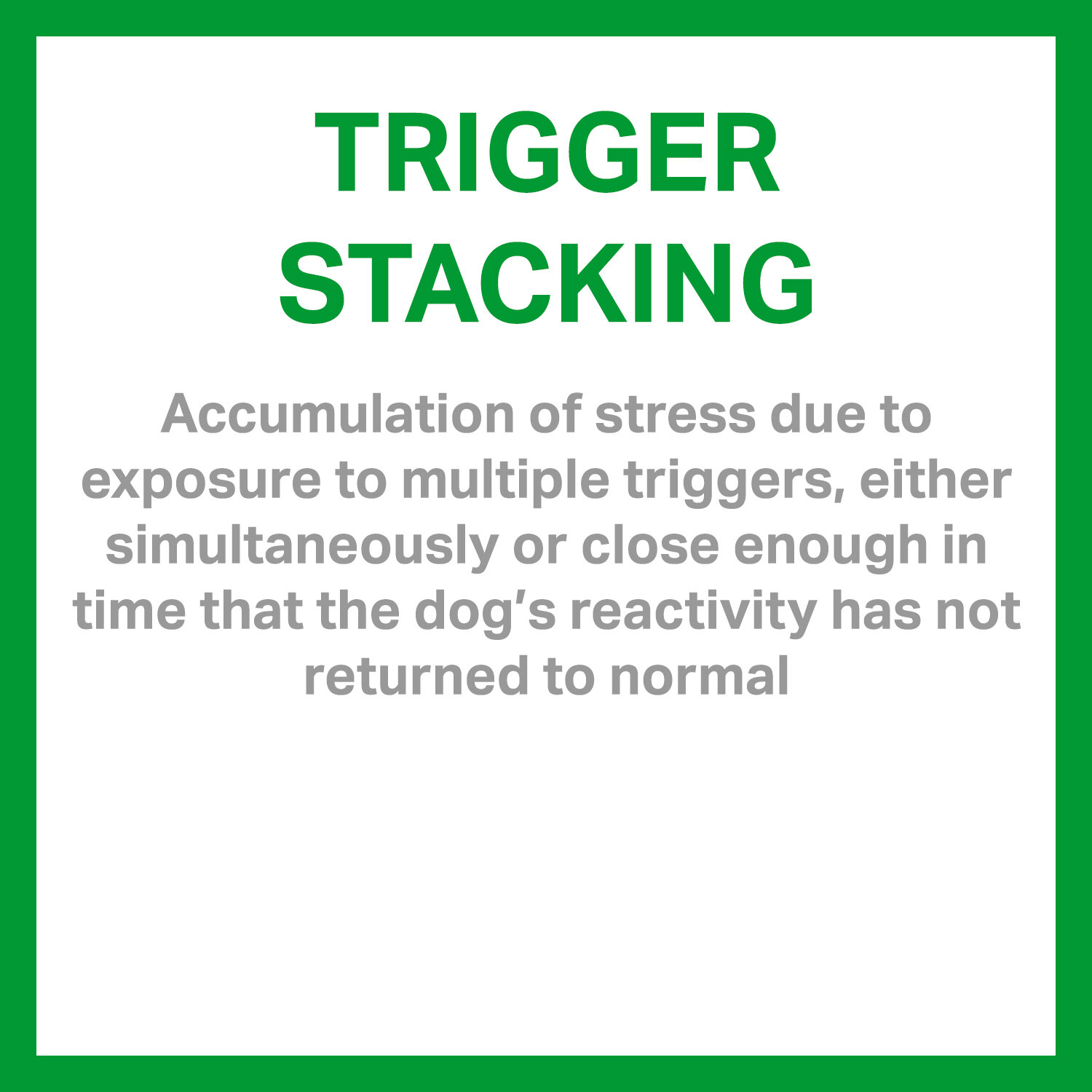









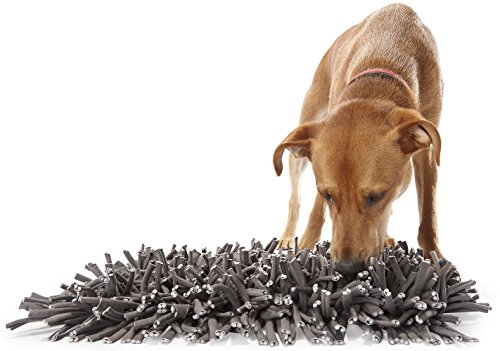



Socializing Your Puppy
Remember:
Never force or pressure your puppy into an interaction
Your puppy is the one who decides if an interaction was positive (not you, not your trainer, or the other animal/person)
Do not overwhelm or “flood” your puppy
The idea behind socialization is that you want to help your puppy become acclimated to all types of sights, sounds, and smells in a positive manner. Proper socialization can prevent a dog from being fearful of children, for example, or of riding in a car, and it will help him develop into a well-mannered, happy companion.
Having a dog who is well adjusted and confident can even go as far as to save his life one day. According to the American Veterinary Society of Animal Behavior, improper socialization can lead to behavior problems later in life. The organization’s position statement on socialization reads: “Behavioral issues, not infectious diseases, are the number one cause of death for dogs under three years of age.” Start taking your dog out to public places once your veterinarian says it is safe, and he’ll learn to behave in a variety of situations and to enjoy interacting with different people. Read AVSAB’s Statement on Puppy Socialization prior to vaccination.
Download Dr. Yin’s Puppy Socialization Checklist
Training Your Puppy
START HERE: Video: The 5 Cardinal Rules of Puppy Training and the 6 Rules for Good Dog Behavior by Pia Silvani (CPDT-KA, CCBC)
AVSAB’s Guide for Choosing a Trainer
+ What is Positive Reinforcement or Rewards-Based Training?
Dogs repeat behaviors that are rewarding. "Positive" training is simply using rewards to train dogs. In positive training, the goal is to help the dog do the right thing and then reward him for it, rather than punishing him for doing the wrong thing. Rewards are withheld for undesired behavior.
Why does Lu's Labs require positive reinforcement training in their contracts? Simply put - it's best for your dog. Aversives are not more effective and they pose serious risks to your dog's physical, mental, and emotional welfare - in addition to eroding your relationship with your dog.
Positive reinforcement in dog training can go by many names: reward-based training, science-based training, force-free or pain-free training, etc. Regardless of the terminology, the general theory behind this line of thinking remains the same.
Positive-reinforcement teaching techniques use non confrontational methods to work a dog’s brain – rewarding positive behavior, establishing rituals and training actions that are incompatible with negative behavior, and lessening a dog’s anger and frustration – all while enabling the dog to feel good inside. Decision-making is influenced without the use of force, and the dog’s trust in the owner is not violated through threatening treatment.
Help your puppy understand what they are doing "right" by using a marker system such as a clicker or your voice. Mark the behavior "yes!" or click and then reward. Precision timing is key! If he makes a mistake, the behavior is ignored, or acknowledged with a non-reward marker to encourage the dog to do something else.
+ Set the conditions: is your puppy ready to learn?
Training should begin in a quiet environment with few distractions. The chosen reward should be highly motivating so that the puppy focuses entirely on the you and the reward. Training just before mealtimes can increase your puppy's motivation.
Your puppy is not receptive to learning when he or she is overexcited, nervous, or overstimulated. Keep in mind your puppy has a short attention span; "formal" training sessions should be limited to no more than 10-15 minutes at a time no more than once or twice per day.
Integrating training into your everyday routines is a natural way for your puppy to learn and reinforce consistency. For example, having your puppy sit before opening the door or placing his bowl on the floor for mealtime - every time.
+ What Every Puppy Should Know
Training your puppy is more than just teaching good house manners for an easier coexistence - it is a safety issue. Training can quite literally save your dog's life or prevent serious injury.
Examples of standard cues that can keep your puppy safe are:
... and many more
AKC's Puppy Training Timeline Goals
AVSAB's Preventative Behavioral Care Guide
+ Training Is For Humans, TOO
So much of your puppy's learning is dependent on your participation and co-learning. The foundation of your puppy's training is your relationship with him or her - your ability to communicate and understand each other. In other words - it's personal. Your puppy is learning your individual body language, movement, routines, and tones along with everything you are "intentionally" teaching; just as you are learning their signs and signals and personality.
This is why it is so important to choose a trainer or facility that emphasizes your direct involvement in your puppy's training. Trainers and facilities that "do the work for you" (e.g. the trainer is doing most of the work with your dog instead of you - or board and train programs) are often not nearly as effective as you and your puppy learning with each other directly. In addition, you are missing out on a critical opportunity to build a relationship with your puppy that last a lifetime. Training is a bonding experience that helps establish trust and confidence between you and your dog - and it is a lifelong engagement. Your puppy will be learning for as long as he lives - and you should want to be a part of it!
Lastly - "Board & Train" facilities or programs should only be used as a last resort (i.e. dog is at risk of euthanasia for a behavioral problem) at the recommendation of a licensed behaviorist. You have no control over what happens at a boarding facility; one bad experience can ruin your puppy’s socialization. Many board and train facilities use force, fear, and pain (in addition to treats) to train dogs. This is very dangerous to a puppy’s emotional well being. Qualified trainers will help you with safe socialization exercises so single event learning can be avoided and the health and safety of the dog is maintained. Humane trainers do not use force, fear, or pain in their training methods.
+ Training Resources to Avoid
There are countless websites, videos, books, and other instructional materials available about training. Unfortunately, the world of dog training is largely unregulated - with no single certifying body providing oversight anyone can call themselves a trainer.
Your Lu's Labs-approved trainer likely has recommendations at the ready for further information - but if you are selecting resources for yourself, here are some things to avoid:
Read more from AVSAB on dominance and punishment in behavior modification.
Examples to AVOID
It is important to be vigilant and to apply scrutiny when selecting training advise. With the rise of exclusively positive-reinforcement and rewards-based training, trainers and businesses that utilize aversive training methods have become savvy in disguising harmful techniques and approaches - making them sound less harmful or less invasive than they actually are. Additionally, be sure that claims of positive reinforcement are actually that - just because a trainer or facility does not use prong collars, shock collars, scruff shaking, etc. does not mean that their other methods of correction are purely positive (e.g. social pressure, invasio of space, verbal scolding). A good rule of thumb is anything that causes physical, mental, or emotional discomfort to the dog is aversive - not positive
Reputable Credentialing Organizations
Important note: No certification guarantees that a trainer or behaviorist uses only force-free, non confrontational methods. If you are unsure, ask what methods the trainer uses, specifically in regard to aversive tools such as shock, prong, or choke collars, intimidation, physical or social pressure.
+ For the Unconvinced
"Show Me The Studies"
"More Studies!"
"But The Professionals Say..."
"But The Experts Say..."
"No, No The Other Experts"
"... The OTHER Experts"
"Does It Really Work?"
"But I Tried It On Myself and It Didn't Hurt"
"Positive Sounds... Too Permissive"
"There Needs to Be Balance"
"He Has To Know Who Is The Alpha"
...Some More Studies
+ What Is Not Positive?
"What a good reminder that 'positive reinforcement' is always, by definition, decided by the receiver, not by the ‘giver.’ " - Patricia B. McConnell, PhD, CAAB Emeritus
Rule of Thumb: Anything that causes physical, mental, or emotional discomfort to your dog is aversive and therefore not positive reinforcement.
Some obvious examples might come to mind:
Some other techniques might not appear "so bad" or have "always worked" but can be just as damaging and traumatic to your dog (and your relationship with him)
Here’s the thing: aversives may work, but they aren’t necessary. In many cases, they are simply inhumane. When considering which techniques or tools to use with your own dog, always ask yourself "Is this necessary?" More often than not, there is a better way.
+ Confused by Terms?
Positive reinforcement. Negative punishment. Negative reinforcement. Positive punishment... huh?
If you're doing advanced reading you may come across the following terms which are used to describe the Four Quadrants of Operant Conditioning. These might be confusing when we're talking about positive reinforcement training because the quadrants include terms with the word "positive" that are not actually positive. Positive in this sense just means the addition of something (including punishment), and negative the subtraction of something - not that the method is force-free or humane.
Source
View the Complete Lu’s Labs Puppy Playlist on YouTube